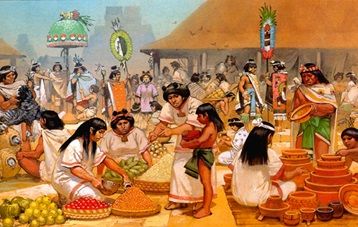Tianguis: origin and traditions, exchange as part of history
All these activities were carried out in places where people gathered for this type of commercial and even cultural exchange, called tianguis.

The etymology of the word tianguis comes from the Nahuatl word tianquiz(tli) "market". There were places where people gathered for this type of commercial and even cultural exchange, called tianguis. In pre-Hispanic Mexico, barter was the most common method to be able to get products and/or services they needed and in the same way, to make available to others what they generated. In the same way, they used coins such as cocoa or tools made of copper.
All these activities were carried out in places where people gathered for this type of commercial and even cultural exchange, called tianguis. The heritage of the tianguis today is a mixture of mercantile traditions of pre-Hispanic peoples of Mesoamerica, including the Aztec and the Middle Eastern bazaars that arrived via Spain to America. The main characteristic of the tianguis is that they are located in a semi-fixed manner between streets and on certain days designated by the uses and customs of each population; there the local community acquires products, food, clothing, appliances, among many others.
According to the National Institute of Anthropology and History (INAH), there are still tianguis of pre-Hispanic origin, such as the market of Cuetzalan (Puebla); Tianguistengo and Otumba (State of Mexico); Tenejapa and San Juan Chamula (Chiapas); Chilapa (Guerrero); Zacualpan de Amilpas (Morelos); or Ixmiquilpan (Hidalgo).




